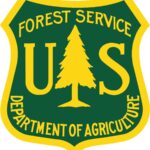
There will be no Oregon 200 in 2026
Whether this will be your first 200 mile race, or you’ve lost count of how many you’ve run, the Oregon 200 will hold a special place in your heart.
You could say this 200 miler was inspired by trail work. After helping out on the Middle Fork of the Willamette River a few years ago, we knew this area was special and that runners would love it and that we needed to create a trail race here. The Middle Fork trail alone is amazing enough, but why stop at a 50K when there is so much more to see and experience? We added in sections from the Oregon Timber Trail’s Kalapooya section including Timpanogas Lake and the little Indigo lake, and even incorporated one of our favorite Oregon hidden gems, the North Umpqua River trail, to create an amazing 200-mile race. We present an adventure that will take you through some of the best of the Willamette and Umpqua National Forests with a route that is extremely crew-accessible and crew-friendly. This race is an out-and-back with 23,000 feet of gain and loss, with 12 aid stations to support you along the way. You have 100 hours to get to that finish line.
We did make a few improvements to last year’s course, that you can read about on the Course page.
We acknowledge and respect that this race occurs on the traditional homelands of the Molalla Tribe, the Confederated Tribes of the Siletz and the Confederated Tribes of the Grand Ronde, Klamath Tribe, Kalapuya Tribe, Yoncalla Tribe, and the Winefelly Tribe.
THURSDAY:
FRIDAY:
TUESDAY
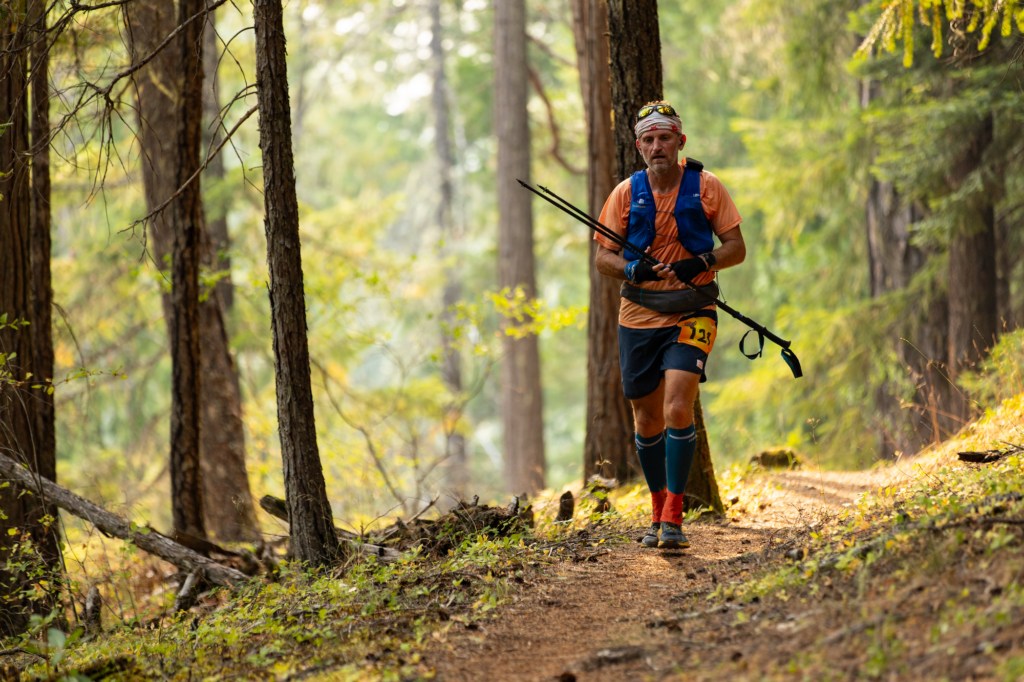
$$
The above is only Go Beyond Racing’s registration fee and does not include Ultrasignup’s processing fees, any taxes, or add-ons you select. Those are included in the prices on the Ultrasignup site.
Payment plans are available through June. Pay $550 now and we’ll contact you to set up the balance on a payment plan.
Fee includes race registration, optional tent camping and parking at Greenwaters Park, race swag, post-race brunch on Tuesday morning, on-course real food, professional medics, and all the other support you expect from a Go Beyond Racing race.
Optional shirts and merchandise are available for purchase during registration and also at the race.
Please note that there are no transfers to other runners and no refunds. If you need to cancel your registration and it’s more than 30 days prior to the race, you will receive a 50% credit toward a future Go Beyond Racing race. If your cancellation is 30 days or less from race day, there is no credit. By registering, you agree to this Cancellation Policy.
Do you want to race but can’t afford the entry fee? We can help with our Trail Mix Fund, covering $500 of the registration fee.
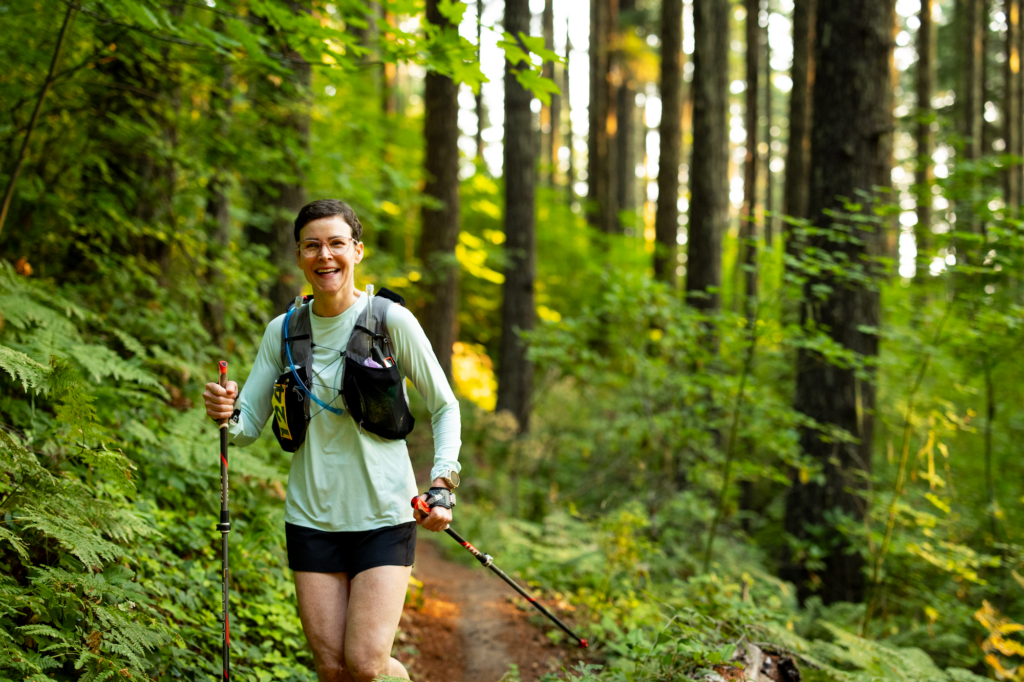
For a thorough course description, visit the Course page.
This race is mostly single-track, and sweet single-track at that. We’re talking almost 200 miles of riverside, lakeside, forest-bathing, dirt trail. You climb and descend 23,000 feet.
Single track: 74%
Forest road (dirt/gravel): 18%
Paved road: 7%
There are 12 fully-stocked and staffed aid stations, seven sleep stations, and one unmanned water station. The furthest you’ll go between aid station is 18 miles.
Here are a few things some of the inaugural year runners had to say about the race.
“The course was beautiful and the trails were peaceful. It was challenging, but the support was so amazing! The sleep stations always had enough room; the aid stations offered excellent service and food. I actually felt like I should be tipping the volunteers and I would jokingly rate each station as 5/5 stars, highly recommend! The course was extremely well marked and easy to follow.”
– Laney Baris
“I’ve raced many ultra distance races before but the Oregon 200 was the best organized race I’ve ever participated in. The aid stations exceeded my expectations and having the volunteer support and the variety of food options available at these aid stations was so valuable and instrumental in the success I had at the race. It was my first 200 and I’m so thankful I chose the Oregon 200 to open up the door for the possibilities of going even further in the future!”
– Kevin Barata
“Drew and I can still confirm that after 10 years of these silly adventures it was the most well-organized race we’ve run to date.”
-Doug Waston
“The Oregon 200 was an incredible opportunity to test my limits with the comfort of knowing that I would be well supported by Go Beyond. At no point was I worried that I wouldn’t have something to eat or drink upon arriving at an aid station and the volunteers were amazing. The variety of food at the different aid stations was a huge plus; I didn’t eat a single Oreo or PBJ while on the course.”
– Daniel Bailey
“I can’t imagine a better race for somebody’s first 200.”
– Ryan Solberg
Oakridge’s Greenwaters Park is the home base for the race. Race headquarters is set up here. This is where bib pick up and the race briefing occurs, where the start and finish lines are, where pacers can sign a waiver and pick up their bibs, and where the post-race awards celebration and brunch occur. There are plenty of nearby accommodation options and amenities (gas, food, grocery, etc).

Crew is allowed and encouraged, but certainly not required. You can do this race on your own using the aid stations and your drop bags. It is a very crew-friendly course though, with access at 11 of the 12 aid stations. More information about Crew here.
Drop bags are allowed at all of the aid stations along the course.
You will drop off all of your drop bags during bib pickup on Thursday afternoon before the race meeting. Each drop bag must be labeled with your last name and bib number. Drop bags are returned to Greenwaters Park after each aid station shuts down.
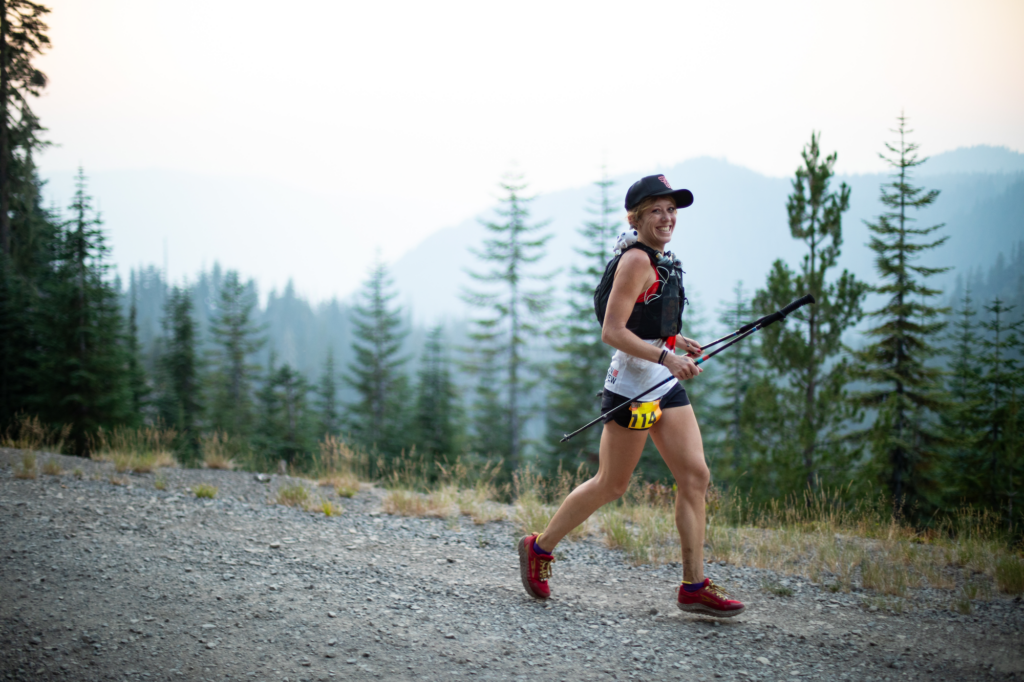
This represents that gear that you are required to carry with you during the entire race:
Considerations/Recommendations to carry and/or have in drop bags:
Note: Pacers are required to carry the same required gear minus the SPOT.
Pacers are allowed and can join and leave you at any of the crew accessible/full aid stations starting at the Sacandanga aid station. Runners can have more than one pacer for the race, but are allowed only one pacer on course at a time. Pacers must pick up a bib and sign a waiver at the Greenwaters Park in Oakridge or at the aid station. A pacer bib is required whenever a pacer is with you on course.
Pacers are responsible for their own transportation to and from the course and are not allowed to leave a car parked at an aid station. This takes some planning. Utilize the Facebook Group to coordinate rides with other races, pacers, and crew. More information on Pacing is here.
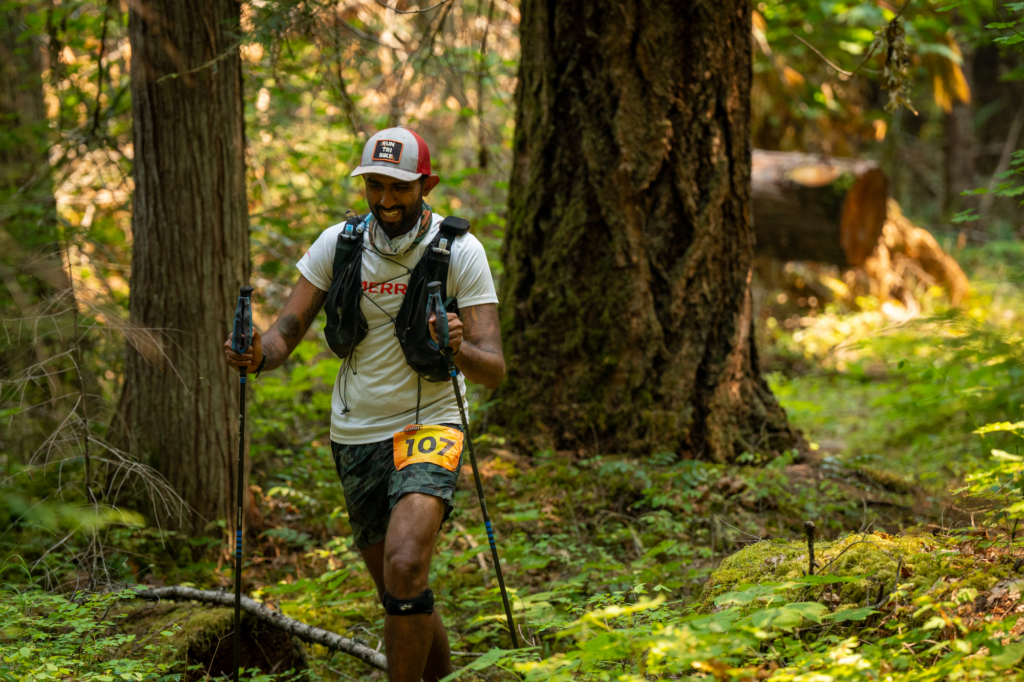
Go Beyond Racing strongly believes that all of us should give back by volunteering to do trail work on a regular basis. For the Oregon 200, all racers must complete a total of eight (8) hours of trail work. The trail work doesn’t need to be done before registering; just sometime after October 1 and before July 31. This required form is signed by the trail work site manager and emailed to the address on the form before the deadline. Entrants and waitlisters without the required trail work will forfeit their spot on August 2nd, and the next on the wait list is invited to take the spot.
We define trail work as maintenance of existing trails and development of new. This can include cutting/clearing logs, improving drainage and tread, benching, trimming overgrowth, etc. It must be a work party organized by a third-party (usually the non-profit organization that arranges the trail work event). It does not include picking up trash, and cannot be just you heading out on your own to do work. The trails can be anywhere in the world; the work doesn’t have to be done on the race course or even in Oregon. This report shows all current entrants and notes those who have completed all 8 hours. Waitlisters won’t show on this report until they are actually in the race, even if you’ve submitted your hours.
Go Beyond Racing hosts several trail work events throughout the year – check our Events Calendar for those. We will also post opportunities we hear of in the Oregon 200 Facebook Group.
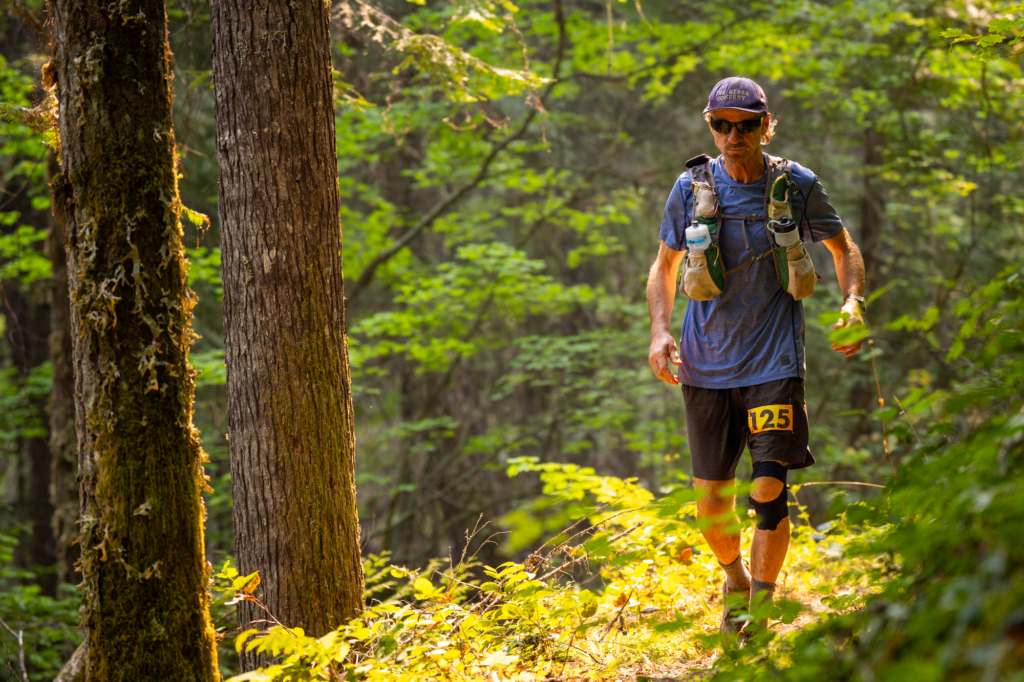
All racers will carry a race-provided GPS-enabled device, which will track their progress. You are required to use the device we provide; personal devices are not allowed as a substitute.
Every racer is also required to have the course map downloaded on a personal GPS device with them during the entire race, so that they can check that they are on course at any time. We recommend using the Avenza app and the Oakridge, Oregon Trail Map – 2020 and the Diamond Lake Ranger District Map on your phone or the Caltopo app with the course map. Be sure to download the layers before going out of service.
We highly recommend that you practice with whatever application you are going to use. You will very likely use it during the race to verify where you are or aren’t, and you’ll want to be familiar with how it works before then. Trust us on this. The stress level can get high quickly when you think you are off-course and cannot access your online map.
Much of the course does not have cell coverage or internet. Note that the Caltopo map has an overlay for cell providers so you can check to see where you have coverage.
We will have Starlink at the Sand Prairie, Sacandaga, and Timpanogas aid stations so crew can check where their runner is via the Spot tracking. Toketee and Lemolo and Greenwaters Park have cell coverage.
The race starts and finishes in Oakridge, Oregon. Runners can park their cars here for the entirety of the race.
Driving directions to Greenwaters Park:
From Portland
From Eugene
From Bend (do not be tempted to follow Google maps and go on the “road” between Crescent and Summit Lakes)
Closest airports are Eugene, Redmond, and then Portland.
We are providing free, dry, tent and car camping at the start/finish at Greenwaters Park for runners and volunteers. You can pitch your tent on the designated grass section of the park. The parking area is an open field so those thinking that they will sleep in their car, be aware that it isn’t shaded.
There are numerous lodging opportunities in Oakridge and campgrounds all over the course.

The weather can change a lot during a 200-mile race. You can check the current conditions below and see what averages are.
Current conditions:
Oakridge (start/finish)
Timpanogas Lake
Toketee Lake (turnaround)
Average temperatures:
Oakridge: 80 degree high/48 low/64 average
Timpanogas: 72/39/56
Toketee: 82 high/49/65
There are a few Oregon 200 beneficiaries.
The Oakridge Trail Alliance. The mission of OTA is to preserve and protect trails throughout the Middle Fork Ranger District of the Willamette National Forest, for future generations of outdoor enthusiasts, while also educating future trail stewards on sustainable trail building and maintenance techniques.
Both the Oakridge and Glide High Schools’ cross country and track teams are also recipients.
There is a Facebook Page where you can stay current on happenings related to this 200 mile race. We also have a Facebook Group just for racers, volunteers, and crew, where you can connect and interact with each other. Go Beyond Racing Instagram too.
